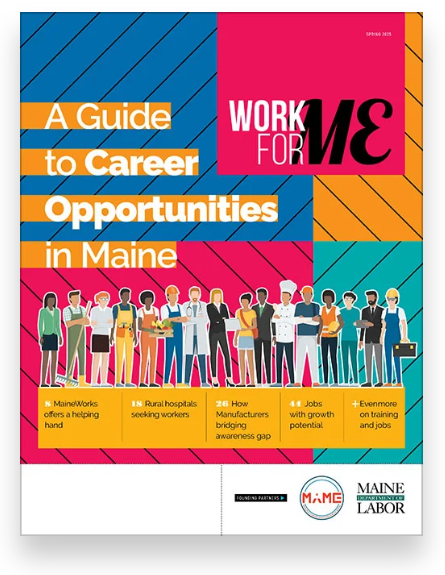Processing Your Payment
Please do not leave this page until complete. This can take a few moments.
New life for an old mill | A pending sale means the former Statler Tissue mill in Augusta may once again fire up its aging machines. But can a new owner succeed where others have failed?
It was the third complete shutdown Jackson experienced since coming to the mill in 1993; he oversaw its closing as mill superintendent for Statler Tissue, and later as mill manager for Tree-Free Fiber Co. As in previous shutdowns, his job immediately shifted from overseeing a team of 85 workers converting recycled paper into large tissue rolls to protecting paper machines and heating them with small oil furnaces to prevent the rollers' rubber surfaces from cracking in the cold. He's kept the grass cut, watched for fires and vandals, and waited for the final word on the mill's future.
"When I was told to shut the mill down, the company said we'd be back up in two or three weeks. Well, we didn't start up after two or three weeks, then another two to three weeks went by, and it just kept dragging on," says Jackson of the American Tissue affair. "Right before the company went into bankruptcy in [January] 2003, the people who owned the mill asked me to stay on and protect it as best I could, because their intention was still to start it up again, or sell it to someone who would."
Now, Jackson may be closer than ever during the past two years to reviving the mill once again. Last April, the U.S. Bankruptcy Court in Bangor approved the mill's sale to a new company called Augusta Tissue LLC, created by a group of investors led by 28-year-old Nima Nili, of Coram, N.Y. Nili and his partners, operating under the name the Evergreen Group, own a tissue converting mill in Coram that produces a full range of tissue and towel products for retail and institutional customers. Buying and operating the Augusta mill would be the final step in creating what Nili says will be a small- to mid-sized, vertically integrated tissue making operation, capable of handling every step of the tissue making and distribution process in-house.
But since the sale's approval, Nili has been struggling to untangle the Augusta mill from the financial mess created by American Tissue Inc.'s collapse, as well as the mill's two previous failures in the 1990s. He's had to negotiate with unpaid creditors, establish a payment plan for back-taxes with the city of Augusta, and work out the details of a landfill license transfer with the state Department of Environmental Protection in order to operate a sludge dump for byproducts of the paper-making process.
With that agreement finally secured last fall, Augusta Tissue's remaining task before closing on the sale is to arrange the financing required by DEP to cover environmental clean-up costs should the company go under. And though he admits difficulty obtaining that financial package has already delayed the deal's closing, Nili now expects to complete the purchase early this year ˆ but is careful not to offer a specific date. "The only thing we're focusing on right now is closing on the mill, and to close on the mill we need to finalize a financing package with an insurance company we're working with," says Nili. "We're optimistic we're going to complete the transaction before the end of the first quarter."
A re-opened mill employing 85 workers again would obviously be a good start to 2004 for Augusta, which has made headlines recently for a series of large-scale job losses. But on top of all the work that's already gone into closing the sale, Augusta Tissue now faces the difficult mechanical task of re-starting a plant that has been idle for so long, says Jackson. And once those machines are running again, industry observers will be watching to see whether the company has established a business model that makes the hundred-year-old facility profitable again.
"There are lots of ancient mills out there surviving or getting ahead," says Lloyd Irland, president of the Irland Group, a forestry and paper industry consulting firm in Wayne. But he adds that success or failure will ride on the management's handling of a few key issues, such as raw material costs, operating efficiency and having picked the right product niche. "With the right amount of Yankee ingenuity applied to these things, and some luck on other fronts like raw materials costs, this could work out. But it's a challenge in capital letters."
The upside of bankruptcy
For most of its hundred-plus years, the Augusta mill has had an illustrious history: Under former owner Statler Tissue, it was one of the first mills in America to make tissue products from recycled fiber in the late 1960s (see "A mill tale," next page). By the late 1980s, though, the mill's aging equipment made it difficult for Statler to compete with companies operating larger and more efficient machines, and the company shut down in 1995.
Tree-Free Fiber then attempted to operate the mill as a standalone entity, selling so-called "parent rolls" of tissue on the open market to companies that could convert those rolls into finished products. The commodity nature of that business model sunk the company in 1997.
American Tissue Inc., which took over the mill in 2000, used Augusta's parent rolls to supply its own conversion mills, and was running well until corporate management issues dragged the company down, according to Jackson (see "Tissue damage," next page). Now, Nima Nili ˆ the son-in-law of American Tissue's former CEO Mehdi Gabayzadeh ˆ wants to recreate portions of American Tissue's business model, but on a smaller scale.
Though admittedly an investor rather than a paper industry expert, Nili says American Tissue's bankruptcy gave his company the opportunity to pick up both low-cost equipment and the personnel with the expertise to run it. "When American Tissue filed for bankruptcy, a lot of used equipment appeared on the market, so it was a good opportunity to buy," says Nili. "I was also able to tap into a lot of talent, whether they were mechanics, supervisors, customer service representatives or salespeople."
Using those people and that equipment in its Coram, N.Y. conversion mill, Evergreen Group has been selling tissue products to consumer and business customers since February 2003, buying its parent rolls on the open market. But from the beginning, Nili wanted his own parent roll mill to guarantee a constant supply and help the company control quality during the entire process. Nili looked at properties along the East Coast and identified Augusta as a good match, both for its location and its parent roll equipment. The key was being able to buy the mill in bankruptcy court at an attractive price, while settling dozens of creditors' claims in a way that didn't hobble the fledgling operation.
Augusta Tissue agreed to pay about $5.5 million for the mill and its equipment, according to bankruptcy filings. But in order to get the court's approval of the deal, the company also had to negotiate settlements with several creditors, including Central Maine Power Co., which was owed $680,000 by American Tissue Mills of Maine. Augusta Tissue agreed to pay CMP a total of $200,000, with $50,000 paid on close of the deal and the remainder in the form of a promissory note.
Another large creditor, the City of Augusta, also settled with Augusta Tissue prior to the sale for more than $330,000 in unpaid taxes ˆ some of which predates American Tissue and is still left over from Tree-Free Fiber's collapse. The city had waited so long to get paid that it threatened to foreclose on the mill just before American Tissue Mills of Maine filed for bankruptcy. But once Nili emerged as a potential buyer, the city agreed to give Augusta Tissue one year to restart the mill and get revenues in the door before it must repay those taxes. "There's not a lot of surety either way. Had the city tried to foreclose on the mill, we would have taken the chance that selling off the real estate and personal property could cover the tax bill," says Mike Duguay, Augusta's economic development director. "I would much rather have going concern under Mr. Nili, employing 80 people and paying taxes."
With its bid accepted and creditors assuaged, Augusta Tissue's final major negotiation was with Maine's DEP, in order to receive a landfill license to operate the mill's sludge dump, where byproducts from the recycled paper pulping process are collected. Though DEP has concerns about the landfill's condition ˆ which has been somewhat neglected due to the series of bankruptcies and ownership changes ˆ it agreed to transfer the existing license to Augusta Tissue for $1.7 million in so-called assurance money to cover potential clean-up costs. Augusta Tissue also agreed to a timetable to start a new landfill monitoring program and take steps to fix any problems uncovered.
But when Augusta Tissue told DEP that it could not raise the complete $1.7 million up front, DEP accepted a compromise plan that calls for the company to provide a $475,000 surety bond to cover clean-up costs, and to begin making monthly cash payments into an escrow account until it has fully funded the remaining amount. "We believe Augusta Tissue met the intent of the [financial assurance] rule, so we granted them a variance," says Bill Butler, an environmental specialist with DEP.
In search of an industry niche
One advantage Augusta Tissue will have if it successfully completes its purchase of the mill is that, compared to the rest of the paper industry, tissue is a good business to be in, analysts say. Domestic tissue makers face less competition from imports, since tissue is more delicate and difficult to ship long distances. Country-specific market tastes and tissue preferences also make imports a tough sell across borders and cultures. Thanks in part to those factors, the $12-billion-a-year tissue industry is expected to grow 2.2% annually over the next five years, compared with a 1.7% five-year annual growth rate for the paper industry as a whole, according to the Massachusetts-based forest products analysis firm Resource Information Systems Inc.
Augusta Tissue also seems to be assembling the right business model to make the most of the market opportunity, say industry experts. Learning from Tree-Free Fiber's failed experiment as a standalone parent roll producer, Evergreen Group will provide Augusta Tissue with a dedicated customer and less price volatility for its product. More important, that dedicated customer has converting equipment that previously was in the same corporate family, and is a good fit for the size of the parent rolls Augusta will produce.
Depending on their age, paper machine widths ˆ and therefore the widths of the rolls they produce ˆ can vary greatly, says Jackson. Older machines, like the Augusta mill's No. 2 machine, built in 1926, produces a 140-inch roll, while the widths of most modern converting equipment takes rolls in increments of 100 inches. To sell paper on the open market, the Augusta mill could cut its 140-inch roll into an easy-to-sell 100-inch piece, but would be left trying to unload a 40-inch remainder. "The way this mill can be successful is to be fully integrated with a mill that can efficiently convert the product we make," says Jackson. "That was one of the problems with Tree-Free. It was hard to get the full [width] sold because it had to be cut up."
Even with sympathetic paper machines and converting equipment, Augusta Tissue and Evergreen are still entering an industry dominated by leaders like Kimberly-Clark and Georgia Pacific. The only way for smaller companies to survive, say analysts, is to avoid competing head-on with those companies and their market-leading brands like Charmin or Bounty, and instead find a way to produce low-cost products in a specific niche. "Smaller companies don't have the deep marketing pockets that Kimberly-Clark has, but those marketing efforts cost the giant companies several hundred million dollars a year," says Andrew Battista, a senior economist with Resource Information Systems Inc. "You can make a tissue mill in your basement and make a few pounds a year as long as you can find a market for it."
Nili agrees, which is why he is targeting a niche that combines a larger company's complete line of tissue products ˆ everything from household towels, napkins, facial tissue and bath tissue to institutional and janitorial products ˆ with a smaller company's more responsive sales and customer service operation. "Our logo is 'Evergreen Group: customer friendly, market savvy,'" says Nili.
Though the company already distributes finished products across the country, its location on Long Island, New York will help it focus on the large markets of New York City, Philadelphia and New Jersey. Nili won't name specific customers, but says the company is already selling to several government, institutional and retail customers, as well as large distributors.
Checking every bearing
Even if the deal closed today, Augusta Tissue still would be a long way from producing its first parent rolls. Restarting a paper mill isn't as simple as throwing a switch to start the machines, says Jackson. And even though he has restarted this mill twice before, he worries that the process may be even more difficult this time because the mill has been without electricity or heat for more than two years.
The first job, says Jackson, is bringing in electrical contractors to perform a complete inspection of the mill's power infrastructure, especially the transformers, which Jackson suspects may need to be replaced. Once the power system has been inspected and repaired where necessary, he can bring in a team of experienced paper workers to overhaul the boilers in the pulping operation, as well as the motors and bearings of the paper dryers and rollers he's been turning by hand for years. "Every pump, every motor and every bearing in the mill will have to be checked, serviced or replaced," says Jackson.
Jackson expects it to take at least 90 days to get one of the mill's two paper machines running again ˆ "if everything went perfectly," he adds. Based on previous startups, he figures the process will cost at least $1.5 million, and require 40-45 employees. Once the mill's infrastructure and systems are on line and one machine is producing tissue, Nili plans to start the second machine and bring the mill's employment level back up to about 85 people. Jackson has already talked to a number of former American Tissue employees ˆ and intends to send a letter to every former employee offering them a position again once the mill is running ˆ but isn't sure just how many will come back. "A lot of people have moved on," says Jackson.
Despite the mill's aging equipment ˆ its newest paper machine dates to the late 1940s ˆ both Nili and Jackson feel that the mill can still be a viable facility, albeit with room for improvement. Prior to its shutdown, American Tissue had planned to invest about $10 million in mill upgrades, and Jackson says Augusta Tissue could make mechanical improvements to the old machines that increase their speed and efficiency. There is also room for a third paper machine, which Nili says he would eventually like to add. "There's a lot of value to adding another machine because you share the overhead of the mill's fixed costs," says Nili.
But Nili and Jackson, as well as Augusta city officials eager to welcome a new employer to town, are understandably wary of overplaying talk of future mill improvements or rehired workers. While acknowledging just how much Augusta Tissue has accomplished to proceed this far, everyone close to the deal is choosing to remain cautiously optimistic until the company can finalize its financing package and close the sale. "Until it's sold, it's not sold.
You hope they will be able to get the deal done and I know the intention is there, but we have to wait until it's final," says Jackson. "But I've got over 30 years in paper mills and I'm confident in our ability to get the mill up and running if they've got the funding to do it."










Comments